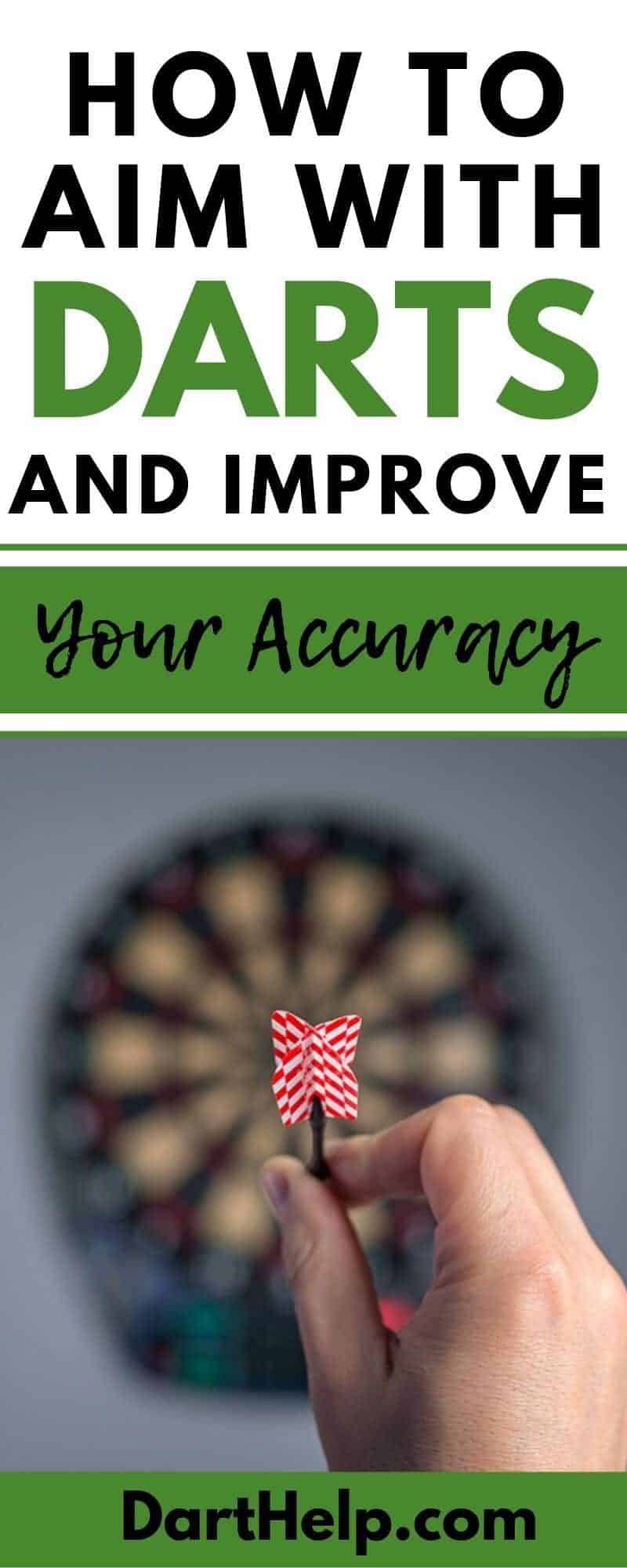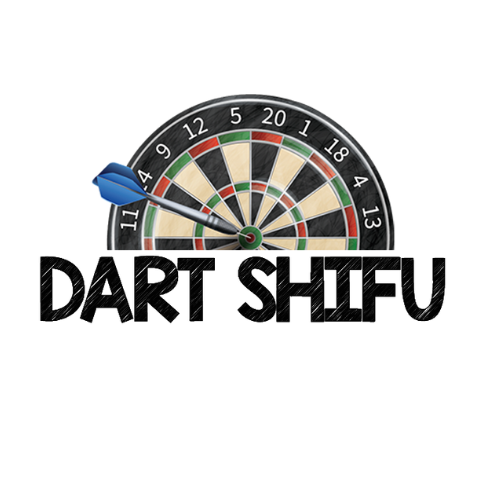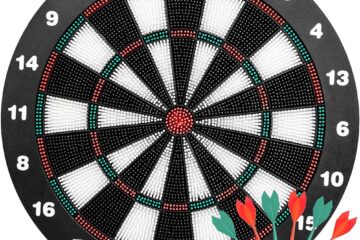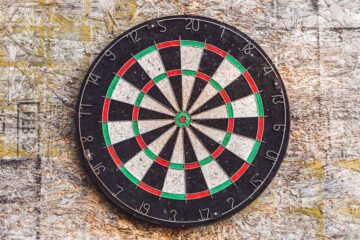To aim with darts, focus on a specific target and use a steady hand to throw accurately. Practice and adjust your technique for consistent results.
Darts is a popular game that requires skill and precision. Whether you’re a novice or an experienced player, knowing how to aim with darts is crucial for success. By following a few key steps and practicing regularly, you can improve your accuracy and increase your chances of hitting the desired target.
We will guide you on how to aim with darts, offering practical tips and techniques to enhance your game. From focusing on a specific target to maintaining a steady hand, these simple yet effective strategies will help you hit the bullseye consistently. So let’s dive in and master the art of aiming with darts.
The Basics Of Dart Aiming
Understanding The Dartboard
Before you can start aiming with darts, it’s important to have a good understanding of the dartboard itself. A standard dartboard consists of 20 numbered sections, each section divided into smaller segments with different point values. The center of the dartboard is referred to as the bullseye, which is divided into an outer and inner bull. The outer bull is worth 25 points, while the inner bull is worth 50 points.
Additionally, the dartboard is further divided into different zones. The triple zone consists of thin outer rings, which triple the value of any segment that lands in that zone. Conversely, the double zone consists of thin inner rings, doubling the value of any segment that lands in that zone. The outermost ring is known as the single zone, which represents the normal point values.
Understanding the layout and scoring system of the dartboard is crucial to aiming effectively, as it allows you to strategize your throws for maximum points.
Gripping The Dart
The way you grip the dart can greatly impact your aim and accuracy. There are a few common dart grips that players use, but the most important aspect is finding a grip that feels comfortable and allows you to maintain control and stability.
One commonly used grip is the “pen grip,” where you hold the dart between your thumb, index, and middle fingers. The thumb rests on the back of the dart, while the fingers ensure stability and control. Another popular grip is the “claw grip,” where the dart is held between the fingers and supported by the thumb.
Whichever grip you choose, ensure that your fingertips are in contact with the barrel of the dart. This provides a more stable grip and allows for better control when releasing the dart. Experiment with different grips to find the one that suits you best and provides optimal control and accuracy.
Finding Your Stance
The stance you adopt when throwing darts is an essential aspect of aiming. A balanced and consistent stance will help ensure accuracy and improve your overall performance. Here are some key tips for finding the right stance:
- Stand with your feet shoulder-width apart, keeping your body weight evenly distributed.
- Keep your non-throwing hand steady by resting it on your hip or by your side.
- Align your dominant eye with the target on the dartboard for better aim.
- Lean slightly forward from your hips to maintain a steady posture.
- Practice your balance and ensure a comfortable stance that allows for fluid arm movement.
Taking the time to find the stance that works best for you will greatly improve your ability to aim accurately and consistently hit the target.

Credit: darthelp.com
Techniques For Dart Aiming
Aiming with darts may seem simple, but if you’re looking to up your game and hit those bullseyes more consistently, utilizing certain techniques can greatly improve your accuracy. In this article, we’ll explore three essential techniques for dart aiming: using the dominant eye, focusing on the target, and utilizing target markings. Let’s dive in!
Using The Dominant Eye
When it comes to aiming with darts, understanding and using your dominant eye can make a significant difference in your accuracy. Your dominant eye is the one your brain relies on the most for depth perception and focus. To determine your dominant eye, follow these steps:
- Extend your arms straight in front of you with your palms facing away.
- Create a small triangle by overlapping your thumbs and index fingers.
- Choose an object—like a dartboard or a light switch—and look at it through the triangle.
- Now, close one eye at a time. The eye that allows the object to stay centered within the triangle is your dominant eye.
Once you’ve determined your dominant eye, adjust your dart throwing stance accordingly. If you’re right-eye dominant, stand with your right foot forward and vice versa for left-eye dominance. This alignment will help you aim more accurately by allowing your dominant eye to focus on the target directly.
Focusing On The Target
While it may seem obvious, focusing directly on the target is crucial for precise dart aiming. Oftentimes, beginners tend to look at their own dart, which can cause their aim to stray off course. So, how can you improve your focus?
- Keep both eyes open: By keeping both eyes open, your aim will become more natural and your peripheral vision will broaden, allowing you to take in more information about the target.
- Avoid distractions: Clear your mind and block out any distractions or thoughts that might divert your attention away from the target.
- Concentrate on the specific segment or area you want to hit: Instead of fixating on the whole dartboard, concentrate on the specific segment or area you want to hit. This laser-like focus will help you hit your mark with greater precision.
- Remember, practice is key. The more you focus on the target in every throw, the better your aim will become over time.
Utilizing Target Markings
Target markings on a dartboard can be useful visual aids for improving your aim. While professional dartboards usually have a clear target area, recreational dartboards might not provide these markings. If you’re playing on a board without target markings, consider adding your own using colored tape or paint.
| Target Markings | Explanation |
|---|---|
| The bullseye | Marking the bullseye with a small dot or X can help you visualize the center of the target and align your throws accordingly. |
| Segment boundaries | Adding lines to separate different segments of the dartboard can assist you in aiming for specific areas or practicing particular target patterns. |
| Scoring zones | By marking different scoring zones, you can better visualize high-scoring areas and aim for those zones to maximize your score. |
By utilizing target markings, you can train your eyes to quickly identify and focus on specific areas of the dartboard, resulting in improved precision and consistency.
Practice And Refinement
Improving your dart throwing accuracy requires dedication, commitment, and consistent practice sessions. Practice and refinement are the key elements that will help you sharpen your aiming skills over time. In this article, we will discuss three effective strategies to enhance your dart aiming technique: consistent practice sessions, seeking feedback, and analyzing mistakes and adjusting.
Consistent Practice Sessions
Consistency is crucial when it comes to mastering the art of dart throwing. Set aside dedicated practice sessions in your routine to improve your aim. Start by designating a specific time and place for your practice, ensuring minimal distractions. Consistent practice will help you internalize the correct form, grip, and release of the dart, resulting in greater accuracy.
During each practice session, focus on specific aspects that you want to improve. Whether it’s your aim, grip, or follow-through, break down your practice into manageable tasks. This compartmentalized approach allows you to focus on one aspect at a time and makes the learning process more structured and efficient.
Seeking Feedback
Feedback is invaluable in the pursuit of improvement. Share your progress and ask for feedback from more experienced dart players or knowledgeable friends. They can provide insights and observations that you may not be aware of. Encouraging others to watch your throw and give constructive feedback can help identify areas for improvement and point out any inconsistencies in your technique.
It is important to be open to feedback, as it can provide valuable guidance to refine your aim. Take the feedback as an opportunity to learn and grow rather than as criticism. Use it to your advantage and incorporate the suggestions into your practice routine, gradually refining your aim with each attempt.
Analyzing Mistakes And Adjusting
Mistakes are part of the learning process, and analyzing them is crucial for improvement. Pay close attention to the patterns of your misses during practice. Are you consistently missing high, low, or on a specific side? Analyzing your mistakes will allow you to identify any recurring issues and make the necessary adjustments in your throw.
One effective way to track your progress and identify patterns is by maintaining a practice log or journal. Record the details of each session, including your aims, results, and any observations. This log will help you evaluate your performance over time and make informed decisions when adjusting your technique.
In addition to analyzing mistakes, experimenting with slight adjustments can also aid in refining your aim. Make small tweaks to your grip, stance, or release based on your observations and feedback received. Continuously iterate and refine your technique until you find the most comfortable and effective way to aim with darts.
In conclusion, practicing consistently, seeking feedback, and analyzing mistakes are essential steps to improve your dart aiming skills. By following these strategies, you will gradually refine your technique and achieve greater accuracy in your dart throws.

Credit: guides.co

Credit: www.123rf.com
Frequently Asked Questions For How To Aim With Darts
How Do I Aim Better At Darts?
To improve your dart aim, focus on your grip, stance, and throwing technique. Practice regularly and aim for the same target repeatedly while adjusting your aim based on where the darts land. Experiment with different techniques until you find what works best for you.
How Do You Shoot Darts Accurately?
To shoot darts accurately, follow these guidelines: 1. Maintain a consistent stance and grip. 2. Focus on your target and aim for the center. 3. Use a smooth arm motion to release the dart. 4. Practice frequently to improve your accuracy.
5. Experiment with different throwing techniques to find what works best for you.
Where Is The Best Place To Aim In Darts?
The best place to aim in darts is the bullseye, located at the center of the dartboard. It’s the highest scoring area and a common target for skilled players.
How Can I Improve My Darts Accuracy?
To improve your darts accuracy: 1. Practice consistently and focus on your technique. 2. Maintain a stable stance and grip on the dart. 3. Aim for a specific target on the dartboard. 4. Keep your throwing arm straight and follow through after release.
5. Experiment with different dart weights and find one that suits you best.
Conclusion
Mastering the art of aiming with darts requires practice, focus, and precision. By understanding the mechanics of the throw, adjusting your grip, stance, and eye alignment, and utilizing consistent practice drills, you can greatly improve your accuracy on the dartboard.
Remember, it’s important to stay calm and avoid rushing the throw. With patience and dedication, you’ll be hitting those bullseyes in no time.



